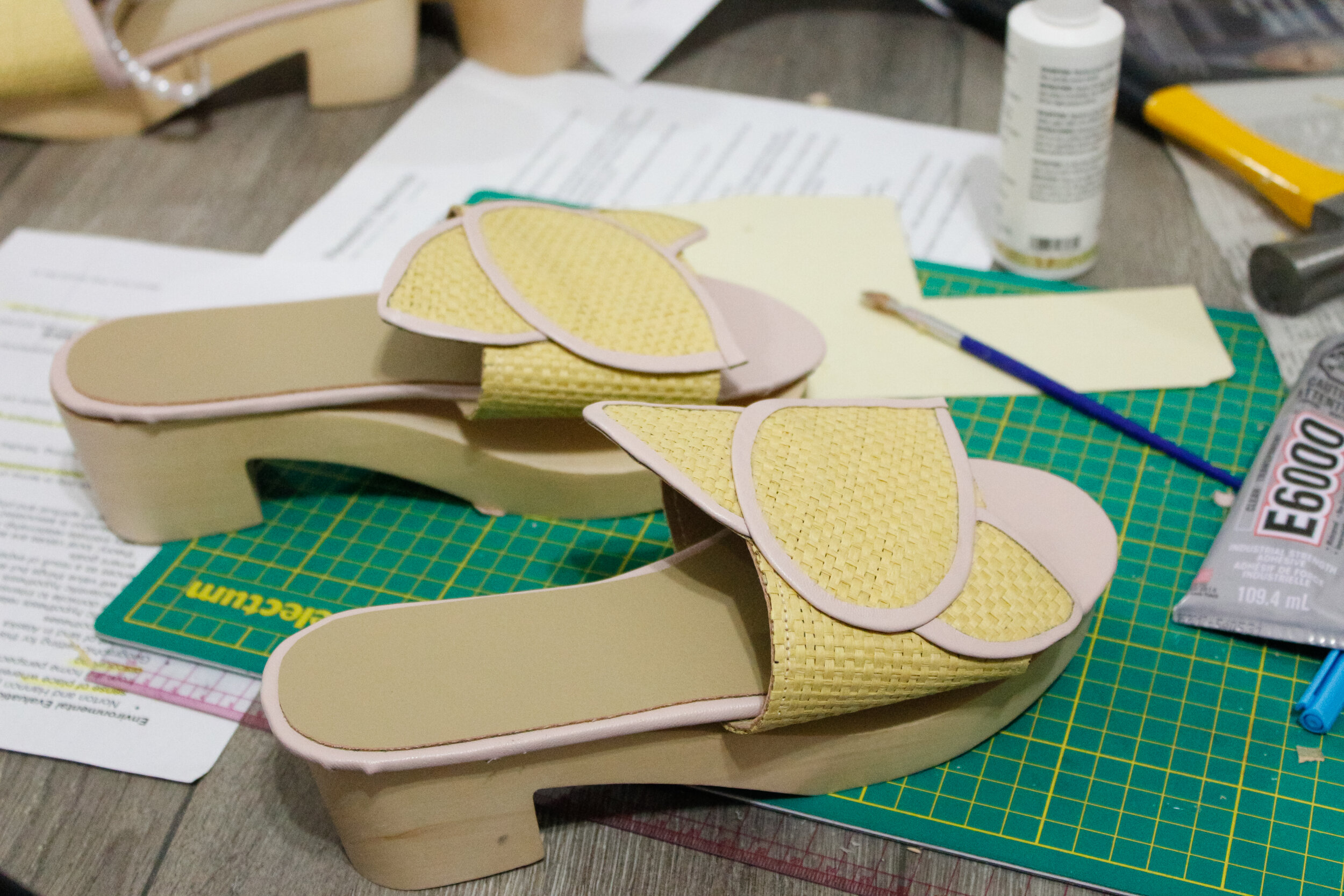Finfo: Vanda Shoe Collection
A requirement to graduate the Fashion Communication program at Ryerson is to create a capstone project that consists of both a research and creative component. My capstone titled Finfo is about internalized oppression among Filipinos and how fashion can challenge this mentality. I explain more about my topic, and the logo system I created for it in a previous blog post.
I also mentioned creating a small shoe collection for my capstone. I’m so excited to finally share the shoes I made. In this post, I’m sharing the inspiration behind the collection and the process of making the shoes.
Why shoes?
The shoe collection was designed in alignment with my research. The main intention for the shoes is to create fashion items that represented Filipino culture and history in a way that Filipinos, either living in the Philippines or the diaspora community, could easily resonate with. Based on my research, I found that it is common for Filipinos to feel that anything traditionally Filipino is not fashionable or is strictly reserved for ceremonial use. Keeping that in mind, I created a project that fused traditional and contemporary fashion. I decided to revive traditional wooden clogs called bakya, and design them in a way that fit current styles and trends.
Prior to starting Finfo, I had no experience with footwear design and construction. When I came up with the idea of making shoes for my project, I didn’t exactly know how I would be able to do it. I researched the process and enrolled in a beginner shoemaking workshop at Art and Sole Academy. Through the workshop, I gained basic skills to create clogs.
To outline the shoemaking simply, the process happened in 3 stages: designing, pattern-drafting, and assembling.
Designing
Like any project of mine, I conduct research prior to designing in order to come up with end products that are meaningful, and in line with values I want to communicate.
The Vanda collection is inspired by the native Filipino orchid called Waling-waling, also known as Vanda Sanderiana. The flower is endemic to the provinces of Davao, Cotabato, and Zamboanga. It is considered the Queen of Philippine flowers. I chose the Waling-waling as the inspiration for the collection because it symbolizes Filipinos’ ability to thrive in any location and situation since the flower can grow in a variety of environments.
On a more personal note, one of my favourite memories as a kid is visiting my grandparents’ house in the summer. My grandmother loves to garden. Her front yard was filled with beautiful flowers including a variety of orchids. Using the Waling-waling as a theme is also my way of incorporating my family into the project. One of the Filipino values that I strongly hold is being family-oriented. Fun fact: the names of the shoes are after my sister and cousins.
Alecxandra
Enya
Arielle
Designing consisted of a lot of sketches and manipulations. I got feedback about the designs, materials, and the process from experienced footwear and fashion designers throughout.
While I was finalizing the designs, I was simultaneously sourcing materials to make the shoes. I was able to buy the wooden soles from my footwear teacher since most companies sell them in bulk. For the uppers, I used a woven textile from the Philippines called banig, which is commonly used for mats, other home and fashion items. I also used acrylic instead of real leather. For embellishments, I used pearls which is both representative of the Philippines and trendy.
Pattern-drafting
Once the designs were final and all materials were in my possession, I started pattern-drafting. Drafting for footwear was a lot easier than pattern drafting for clothing. However, I still spent a long time figuring out how to turn my two-dimensional designs into real shoes. This stage was the most frustrating because it consisted of a lot of trial and error. I documented the process by taking photos and some videos. I share a few of them in this post.
Assembling
After drafting the patterns, I cut out the materials and start putting the pieces together to make the shoes. Making the collection required sewing, hammering, and a lot of glueing.
Assembling was a good practice for patience. I noticed that taking my time produced better results. When I made mistakes, a lot of the times it was because I tried to do something quickly. I reminded myself to slow down and pay attention to what I was doing. Seeing the shoes come together was extremely rewarding.
My friend Em, who was a model for my Finfo shoot, and me with the collection
That was quite a lengthy post, but I hope you enjoyed learning about the process of making my shoe collection. Thank you for taking the time to read it. If you have any questions about the collection or the shoemaking process, send me a message. I’d love to talk more about it.
I also want to mention that I know that it has been a challenging couple of weeks because of the COVID-19 pandemic. Be there for people who need you. Eat lots of nutritious food. Practice good hygiene. Take time for yourself amidst the chaos.
See you in the next blog post!





















